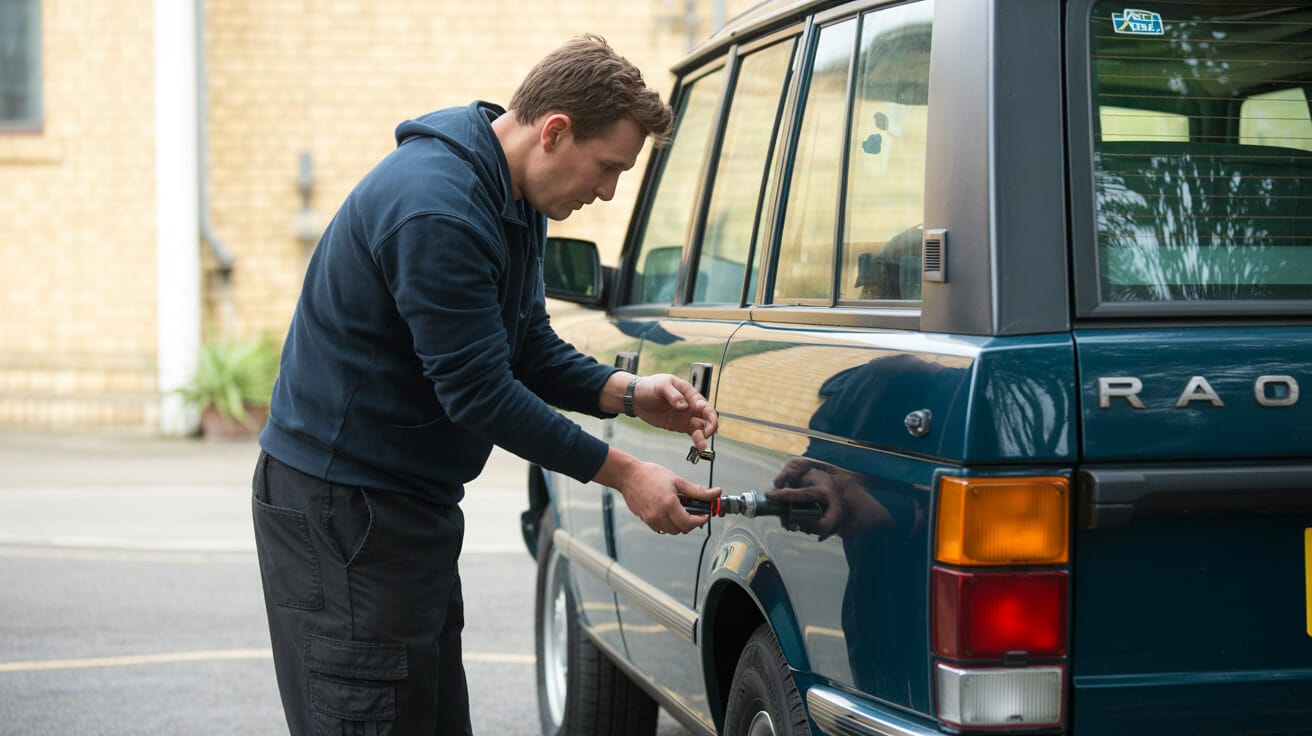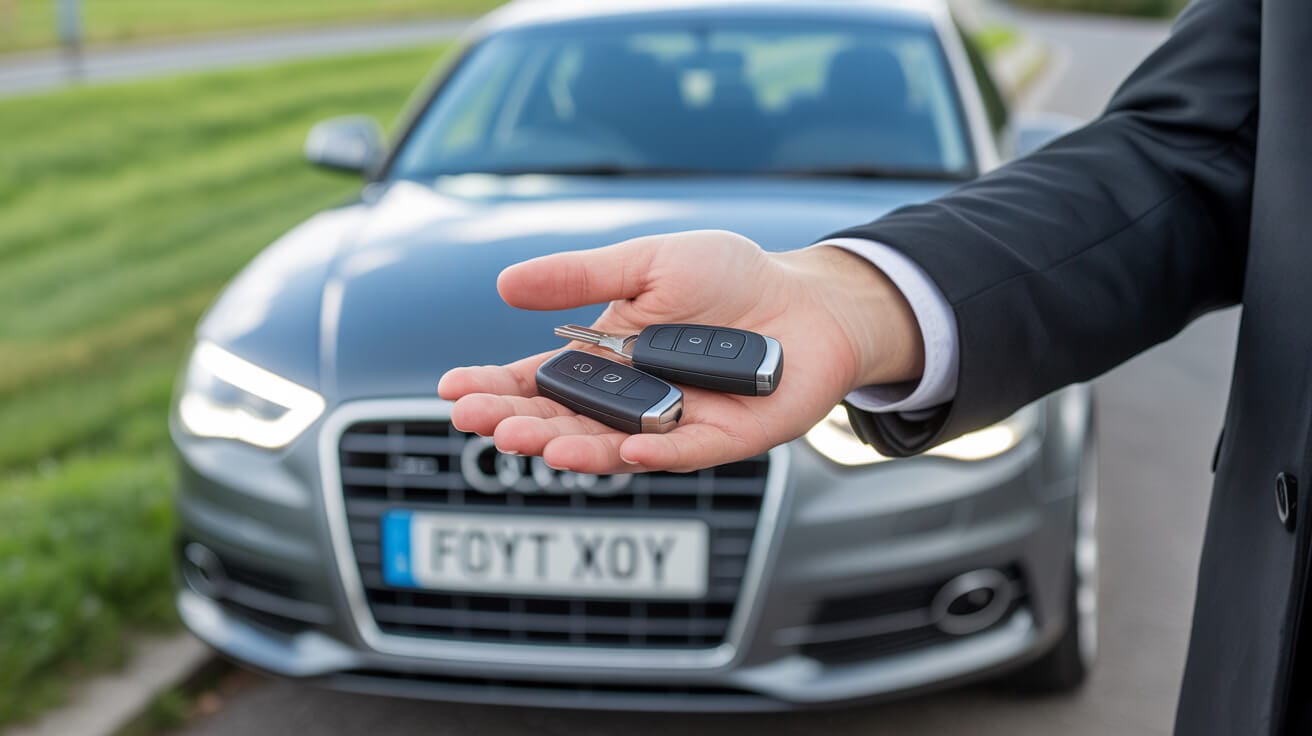How Can a Lost Key Disrupt Your Entire Fleet’s Momentum?
A single lost or malfunctioning fleet vehicle key can stall your operation in seconds—drivers held up, deliveries missed, and customer promises broken. Every minute spent resolving the issue doesn’t just delay one vehicle—it ripples through your schedules, erodes profit, and chips away at team confidence. This is more than just an inconvenience. For high-performing fleets, it’s a silent saboteur.
Downtime triggered by key or credential problems casts a wider shadow than most operators realise. In the time it takes to notice a problem, dozens of dependent tasks and people are already adjusting, scrambling, or sitting idle. Every unplanned pause demands quick decisions, and quick decisions made under pressure can lead to hidden costs with long-term consequences.
A missed delivery at sunrise can still sting at sunset, echoing through customer reviews and bottom lines.
What Triggers Fleet Downtime from Keys and Credentials?
Downtime starts the moment a key or credential is missing, damaged, or fails to work. Immediate impacts include stranded vehicles, idle drivers, and chaotic rescheduling. Behind the scenes, managers begin firefighting—leveraging workarounds, fielding urgent calls, and making “just this once” exceptions that cost more with every repetition.
Who Should Take Charge When a Key Goes Missing?
Responsibility starts at the ground level: drivers must report lost or non-functional keys immediately. But effective fleets reinforce this with operations managers empowered to launch approved protocols and communicate status fleet-wide. When each person understands their role in the escalation chain, the operation loses less time and recovers far faster.
Step List: Immediate Response to a Lost or Broken Fleet Key
- Report at first notice – No issue is too small to flag.
- Record essential details – Who, where, and when are logged instantly.
- Audit for available spares or digital overrides – Confirm backup credentials.
- Inform all stakeholders – Keep coordination tight to minimise confusion.
- Deploy authorised resolution – Contact a trusted, non-destructive specialist.
A culture of rapid reporting and well-drilled process keeps small errors from becoming major operational blocks.
Where Do Hidden Downtime Costs Burrow in Fleet Operations?

Not all downtime costs announce themselves on budget lines. The direct price of a new key or urgent call-out is clear, but the softer costs—the overtime, failed handovers, and patchwork workarounds—often do more damage to margins and morale. These hidden drains linger in staff overtime, makeshift solutions, compliance risks, and missed SLA targets.
Fleet managers chasing visible expenses alone can miss these bleeding-edge inefficiencies, letting small process cracks widen into systemic loss.
Your fleet’s biggest losses are often the ones you can’t see in a single ledger.
Which Admin Shortcuts Multiply Risk and Cost?
Every detour from official process—manual key logs, verbal handovers, re-keying without documentation—chips away at accountability. Even the best teams slip when under pressure, and without disciplined systems, recurring little errors become costly habits.
When Does Key Handling Collide with Worker Retention and Audit Performance?
Shortcuts can undermine not just processes but trust. Staff observing frequent corner-cutting are more likely to leave for better-run companies. Meanwhile, audit failures due to poor documentation or unclear chains of custody can jeopardise insurance, contracts, and reputation.
A quick comparison shows how visible and invisible costs stack up:
| Cost Type | Hard Costs | Soft Costs |
|---|---|---|
| Key Replacement | £100–£300 per event | Admin drag, morale slip |
| Emergency Callout | £80–£200 per incident | Overtime, SLA misses |
| Lock/Module Repair | £150+ per intervention | Compliance disputes |
| Delivery Delay | Contract penalties | Customer trust, reviews |
| Improvised Fix | Seldom booked | Audit/insurance risk |
Spotting these costs takes quarterly review and the will to fix root issues, not just symptoms.
Bullet List: Soft Cost Pitfalls in Key Management
- Manual handover errors: – Create insurance blind spots.
- Incomplete documentation: – Hinder claims and compliance.
- Scrambled last-minute solutions: – Cause delays that multiply downstream.
- Staff overload: – Drives higher turnover.
Every shortcut leaves a data gap—and every data gap is a door for downtime to return.
Why Does Evidence Matter More Than Good Intentions for Insurers and Auditors?

Insurers and auditors aren’t swayed by stories—they want sequence, proof, and independent verification. Even with the best intentions, missing or muddled documentation can turn a straightforward claim or incident into an uphill battle. In modern fleets, the paper trail matters at least as much as the repair itself.
In a dispute, evidence isn’t a luxury—it’s your single strongest lever for a fair outcome.
What Records Turn a Downtime Event into a Defensible Claim?
The key: redundancy across records. Industry-grade audit trails include stamped photos of condition before and after service, digitally logged events, signed acceptance forms, proof of provider credentials, and regular review reminders. Each layer makes it harder for a gap to slip through.
Where Does Weak Record-Keeping Expose Risk and Erode Value?
Missed photo logs, unverified access, and improvised repairs can each trigger insurance refusal, audit flags, or even asset write-downs. This risk escalates with every undocumented exception or verbal agreement.
Step List: Fleet Evidence Essentials
- Photograph all affected components – Before and after the event.
- Log repair/service digitally – Including contributors and timestamps.
- Verify provider qualifications and insurance – No shortcuts.
- Encrypt and store all records securely – Beyond simple paper files.
- Run regular documentation audits – To catch and fix gaps.
Proactive documentation means fewer surprises—whether from insurers or at contract renewal.
Are Digital Keys and Fleet Apps a Blessing or a New Blind Spot?

Digital keys, app-managed credentials, and cloud access systems can increase flexibility, but they also create new downtime threats: dead batteries, lost devices, app mismatches, or out-of-date user permissions can immobilise assets just as fast as a missing key can. Cybersecurity standards have raised the bar for compliance, with every access event logged, encrypted, and subject to audit.
If you overlook digital credential management, you can lose control of your assets—and your audit trail—without even realising it.
In the digital era, risk hides in expired permissions and forgotten devices as much as broken keys.
What Can Go Wrong When Apps or Devices Go Unmanaged?
Lags in removing access post-offboarding, tokens out of sync, permissions stretched across too many platforms—all magnify exposure. Unauthorised access isn’t just a security problem; it’s now an audit liability.
How Do Robust Policies Make Digital Credentials an Asset, Not a Weakness?
Best-in-class fleets maintain real-time registers, automate removals, encrypt logs, and conduct regular app and permission sweeps. This clarity closes gaps before they become failures.
Bullet List: Core Digital Credential Risks
- Account orphaning after staff turnover: – Silent security threats.
- Untracked temporary access: – Can linger far beyond need.
- Firmware or app update mismatches: – Lock users out.
- Non-encrypted logs: – Expose operations to audit penalties.
Digital controls work only if they’re as methodical—if not more so—than their physical counterparts.
How Does a Non-Destructive-First Method Preserve Fleet Value and Compliance?

Authorised, non-destructive entry is no longer a “nice to have”—it is the regulatory and financial minimum. Forced, rushed, or invasive entry can destroy OEM warranties and lower residuals, adding thousands in hidden costs. Providers who skip steps or use force, even in emergencies, leave lasting scars not just on vehicles, but on contracts and compliance standing.
Autolocks Ltd approaches every call as audit-worthy. Each van is kitted with the right tools, protocols, and self-check processes—ensuring damage is never a by-product of urgency.
Every clean repair keeps asset value high and compliance risk low.
What Distinguishes a True Non-Destructive Protocol?
Experts start with methodical inspection, using only manufacturer-approved tools, and documenting each step with timestamped photos. No shortcuts or undocumented bypasses are tolerated, and every repair concludes with a customer demo and digital receipt.
How Does a Customer Verify Genuine Non-Destructive Care?
Ask for before/after photographs, digital records, and a demonstration of all features before sign-off. Quarterly fleet file reviews catch process gaps and reinforce provider accountability.
Step List: Enforcing Non-Destructive Standards
- Inspect the problem—don’t guess – Identify failure without damage.
- Deploy only certified tools and mats – Maintain all trim and finishes.
- Photo-document every stage – For later verification.
- Encrypt records for retention – Extend auditability beyond the workshop.
- Demand a demo before handover – Confidence gained on the spot.
Proof isn’t a last step. It’s a process woven throughout service delivery.
Who Can Deliver Audit-Grade Service and Survive Scrutiny?

Fleet owners should demand more than basic competence—only partners with process discipline, evidence-first culture, and compliance navigation deserve your confidence. The right provider aligns with ISO standards, embraces data privacy, and produces every log and certificate on demand.
Autolocks Ltd offers just that—proven, certified process and market-leading UK-wide coverage. Our service adapts to unique fleet needs, logging every event for compliance and audit resilience.
Trust is earned twice—once by action, again by the strength of your audit chain.
What Ties Compliance, Process, and Audit Together?
Audit-worthy partners provide certified staff, documented process flow, encrypted records, routine audit drills, and rapid retrieval of every record as needed. These are more than checkboxes—they are business-critical behaviours.
What Should a Partner Do Beyond the Repair Moment?
They must deliver live evidence chains, always-current certifications, and clear communication at every touch—well beyond the on-site fix.
Bullet List: Service Audit-Ready Essentials
- Live certifications and insurance: – No expiration gaps.
- Encrypted, time-stamped logs: – Accessible yet secure.
- Rapid digital evidence delivery: – For contracts and claims.
- Demonstrable transparency: – Live feature demos before sign-off.
With the right partner, no downtime event can become an existential risk.
How Can a Culture of Prevention Shore Up Resilience Across a Fleet?

Prevention trumps every repair. Fleets that operate with a “see something, say something” ethic, regular review cycles, and inclusive incident reporting reduce both downtime and audit exposure. Proactivity isn’t just about strong rules—it’s about making those rules into habits that stick.
A culture of prevention grows when all levels—drivers, dispatch, ops, leadership—own the discipline of process improvement and transparent reporting.
The best fleets invest more in stopping problems than in cleaning up after them.
What Behaviours Turn Rules Into Reality?
Routine log reviews, root-cause incident debriefs, and updating standard operating procedures (SOPs) to reflect real-world patterns embed prevention. This closes the loop between insight and action.
What Drives Learning and Limits Future Loss?
Embedding feedback into weekly debriefings, incentivising swift reporting, and bucket-testing new procedures in live trials prevents pattern reoccurrence.
Step List: Company-wide Prevention Protocol
- Schedule frequent SOP reviews – Keep process current.
- Investigate all failures—even near-misses – Eliminate hidden causes.
- Update training based on real events – Information becomes action.
- Publicly reward rapid reporting – Motivate system discipline.
- Run scenario simulations – Practice resilience.
The ultimate downstream cost control is a culture wired for vigilance.
Ready to Make Downtime a Thing of the Past? Fleet Key Security with Autolocks Ltd

Protecting fleet uptime isn’t just about clever fixes or quicker responses. It’s about certainty, evidence, and process discipline that makes downtime incidents rare, short, and non-threatening to your core business.
Every system, credential, and piece of documentation is part of a bigger, defendable chain—one that converts small operational events into demonstrable value, compliance wins, and contract security.
Businesses that build proof into daily practice win more contracts—and sleep better, too.
From audit-ready digital evidence packs and warranty-safe non-destructive service to market-wide credential handling and SLA-backed response, Autolocks Ltd delivers on the entire chain of value for your fleet.
What Can Proactive, Audit-Grade Service Bring to Your Operation?
You gain faster claim settlement, error-proof contracts, higher driver confidence, and lower operational cost from day one. All records are prepped for review—accessible, encrypted, and compliant without exception.
Why Rely on Autolocks Ltd for National Fleet Security and Compliance?
You access the very best in ISO-compliant protocols, live credential and insurance status confirmation, and expert hands that work damage-free—every single time. From Ford to Tesla, national lease portfolios to regional carriers, your fleet is protected and future-ready.
Step List: Taking the Next Step Toward Zero Downtime
- Reach out for consultation – Speak to a dedicated fleet expert within the hour.
- Book a custom audit – Tailored to your current process and assets.
- Receive live downtime diagnostics – ROI-based analysis and mitigation.
- Access audit-grade evidence packs – Immediate, contract-ready proof.
- Seal ongoing compliance and resilience – Stress-tested, documented, and always reviewable.
Choose Autolocks Ltd when you want absolute downtime confidence and bulletproof fleet audit records. If you appreciate live evidence, certified non-destructive practices, and audit-proof, UK-wide support for fleet key security, our expert team is ready to help—today.
Frequently Asked Questions
How Can One Missing or Disabled Fleet Key Paralyse Operations and Drain Future Profit?
Losing access to a single fleet vehicle seems trivial until cascading consequences surface: scheduled routes miss, customer timing slips, and drivers drift into standstill. For each hour a van sits idle, revenue clocks backwards; your cash flow takes invisible dents well before quarterly statements call them out. Instead of a routine dispatch, the day turns into a scramble—admin teams fill inboxes with SOS messages, courier promises unravel, and unlogged workarounds multiply risk without anyone noticing. The cost doesn’t end at the locksmith’s invoice; it compounds as lost contracts, deferred invoices, and damage to the operational confidence your business sells every day.
One quiet vehicle at dawn can erase a team’s performance by dusk.
Trusted fleet leaders don’t leave that risk to chance—they encode process escalation, asset context, and fallback plans into every job. When downtime hits, visibility matters: Was there a spare? Who last drove? Is there a live backup credential—physical or digital—within reach? The difference between a day lost and a glitch absorbed is the speed and veracity of your response. Teams who call Autolocks Ltd get more than a fix—they get a chain-of-custody event, digital logs for insurance, and a certified, non-destructive solution that never gambles with warranty or audit trails. The optimal result: an issue contained to minutes, not hours, and no lasting edge surrendered to downtime.
Key Containment Blueprint
- Report key loss/loading issues immediately—never after next shift.
- Isolate the affected asset and its current status (location, driver, use).
- Confirm existence and function of all redundancy—spare keys, digital access permissions.
- Escalate with a pre-approved partner accredited for your vehicle make and model.
- Document every step, and re-enable the asset with proof in hand.
Every well-managed loss is an unbroken customer promise and a reputation multiplier.
Where Do Hidden Downtime Costs Disappear—And Why Are They So Dangerous for Fleet Growth?
Direct expenses—like an emergency callout or replacement key—are visible, but most value loss drains away quietly. Overtime paid to standby drivers, admin hours lost to manual chasing, compliance risks from undocumented handovers, even contract penalties for missed slots—none of it shows up on a simple supplier invoice. As you scale, so does the risk: a patchwork process or inconsistent handling lets invisible inefficiencies compound, repeatedly slashing your total service margin and leaving review and audit scores vulnerable when the quarter closes.
Invisible losses today return as lost trust and bigger bills in tomorrow’s audit cycle.
Autolocks Ltd equips your fleet with forensic transparency: every call recorded, every fix logged, SLA windows met, and a review-ready file for every repair, no matter how minor. Routine failures—like orphaned spare keys, last-minute route edits, or once-off digital overrides—become line items in your cost ledger, not shadows to chase in post-mortems. In that clarity, you find your real P&L, and you can plug holes before they drain years of reputation and reward.
Hidden Cost Table
| Downtime Event | Direct Cost | Silent Ripple Effect |
|---|---|---|
| Lost Key | £120–£300 | Idle assets, rush rescheduling |
| Emergency Callout | £90–£210 | SLA/contract breach risk |
| Module Repair | £150+ | Warranty void, audit claims denied |
| Manual Handover | Missed reports | Compliance flag, insurance dispute |
| Unlogged Spare Use | Not visible | Orphaned assets, denied coverage |
Not tracking the granular cost is how companies pay twice—first in cash, then in competitive ground lost.
Checklist: Unseen Cost Amplifiers
- Staff forced into last-second overtime and crisis mode.
- Missed deadlines and premium “recover me now” surcharges.
- Contracts missed or penalised due to informal SOPs.
- Rising churn: top drivers, admin, and customers look elsewhere when chaos repeats.
Fleet performance is as much about the risks you see as those you prevent.
Why Is Ironclad Evidence & Documentation the Gatekeeper for Claims, Audits, and Insurance?
Every credible insurer, auditor, or procurement lead trusts data—photos, logs, timestamps—not stories or best intentions. Proof isn’t paperwork; it is operational oxygen. If a claim lands with only a “We fixed it” tale and a thin file, months may pass before resolution—or the answer may be outright denial. In contrast, ironclad, digital evidence—before/after images, role-based credential logging, and chain-of-custody for every device—shields your fleet against gentle inquiries, aggressive audits, and insurance disputes alike.
When every fix is captured and logged, your claims don’t just get heard—they get paid.
A single missing event (no signature, photo, or certificate) is all it takes to derail compensation or trigger a wider compliance cascade. Autolocks Ltd bakes audit conformity into its workflow: every mission is stepwise photographed and chronologically stamped, with digital retrieval for all key events from the day of service to the end of asset life. Auditors and claims teams aren’t hunting for trust—they’re checking the record. With an audit-grade partner, “What happened?” is never answered with silence.
Documentation Master Sequence
- Photograph assets before, during, and after intervention.
- Log each action digitally: who, when, which tool, what was the result.
- Encrypt and store every credential and asset record for instant retrieval.
- Keep insurance and authorisation certificates perpetually live and reviewable.
- Run random audits; reward completeness, not mere compliance.
Every resolved event is a future win—insurance paid, no-contract loss, and confident stakeholder updates.
How Do Digital Keys and Fleet Access Apps Both Empower and Expose Your Operation?
The digital wave—app-based keys, cloud-controlled access, and phone-based credentials—gives your team seamless, never-lose-the-key onboarding. But as capability scales, so does operational risk: accounts orphan when staff change, permissions lag behind real-time need, and a simple device firmware mismatch can lock out the entire asset. Insurance and regulators expect your audit trail to be as sharp as your tech stack: every access or control action, logged, encrypted, instantly retrievable, and certifiably traceable.
Digital control is only as useful as your discipline for managing access and logging event chains.
Autolocks Ltd guides fleets beyond first-gen digital upgrades: every credential sits in a living register, with offboarding, status checks, audit trails, and compliance mapping built in. Ignore a patch or let a former staff phone retain access, and you open new attack vectors—two, three, ten times the cost of a lost mechanical key. The net result isn’t UX improvement; it’s stalling, downtime, and the kind of compliance breach that gets noticed at the board table. Controlled, reviewed, and retrievable permissions transform digital risk into uptime.
Digital Control Audit Table
| Failure Mode | Potential Fallout |
|---|---|
| Orphaned account remains | Undetected future breach |
| Device/app mismatch | Sudden vehicle lockout, service halt |
| Missed deletion of access | Post-exit compromise, claim denial |
| Lag in permissions update | Delayed asset turnaround |
| Unlogged credential handoff | Audit/insurance penalty triggered |
Strong digital fleets treat credential lifecycle as a financial asset—always spinning, always audited, always closing risk.
Why Should Non-Destructive-First Entry Be an Unbreakable Principle for Fleet Uptime and Asset Value?
Every shortcut that scuffs a trim, snaps a latch, or bypasses an OEM protocol is a silent thief—it lifts future margin from asset resale, invites warranty headaches, and gifts auditors a pretext for penalty. Non-destructive-first isn’t a slogan; it’s a contract with your fleet’s value. Every fix must leave the original systems, coding, and aesthetics untouched, fully documented, and recoverable. With every insurance or digital claim, compliance moves up the priority stack—proof of method trumps peak speed, especially when compliance is non-negotiable.
A scratch today is a denied claim, a lower fleet valuation, and a harder renewal tomorrow.
Autolocks Ltd never improvises: all tools are OEM or certified, traceability is built-in, and no step is left unlogged—from pre-inspection to handover demo. Vendors leaving out-before-and-after-photo sequences, missing live credential updates, or short-cutting site safety have no place on your contract roster. Method is the new metric. Audit resilience now decides which fleets win big contracts—and which exit the field.
Non-Destructive Service Hallmarks
- Pre-service asset check detailed down to fixings and trim.
- Use of calibrated, OEM-starred tools and parts only.
- Digital photo record at every phase, verified and retrievable on demand.
- Technician credentials always available, insurance cover live.
- Post-repair full system demonstration before re-release to service.
When the fix is more than skin-deep, you win twice: a compliant record and a preserved asset.
What Sets Prevention-First, Audit-Ready Partners Apart—and Why Do the Best Fleets Refuse Anything Less?
A fast fix bought cheap can lead to years of expensive consequences. Prevention-first partners don’t just instal or repair keys—they build disciplined systems, review SOPs after every event (even near-misses), reward staff for transparency, and use incident data to compress future risk. The result? Fewer surprises, higher uptime, lower long-run cost, and contract prospects that respect robust compliance over bravado.
The only mistake that repeats is the one nobody logged, reviewed, or learned from.
Choose audit-grade vendors by their visibility—current credentials, live insurance, and chain-of-custody digital reporting. Autolocks Ltd operates at ISO/insurance-rated standard: every intervention, handover, and system update ready for inspection at a moment’s notice. Routine drills, staff recognition for quick reporting, and instant documentation aren’t theatre—they’re a market signal that your fleet leads in resilience. Build your reputation for reliability by partnering with those who prevent issues, not just patch them.
Audit-Ready Partnership Protocols
- Credentials, insurance, and training—always certified, never expired or out-of-reach.
- Evidence logged in real time, encrypted and auditing-ready.
- Transparent task demos and digitally signed handovers for every job.
- SOP reviews after incidents: learn, refine, compress risk, and retrain.
Top fleets will always have issues. The winners are those who handle them before they turn into patterns, and who leave the audit table with nothing to hide.
Choose Autolocks Ltd to put your fleet on the compliant, prevention-first edge—where downtime is contained, records always protect you, and every intervention grows your reputation, not your risk.







